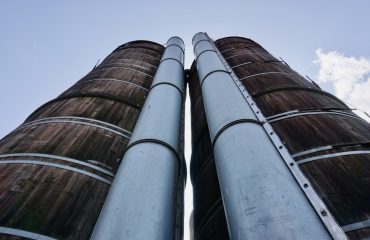For decades, steel has been synonymous with strength and durability, but its production has also been associated with significant energy consumption and carbon emissions. However, the steel industry is undergoing a dramatic transformation, driven by a global commitment to sustainability. This post explores the exciting advancements in energy-efficient steel products, showcasing how innovation is making steel a more environmentally responsible material.
1. Advanced Steelmaking Processes: Minimizing Energy Consumption
The traditional steelmaking process is energy-intensive, relying heavily on fossil fuels for heat generation. However, significant strides have been made in developing more efficient processes. These include:
- Electric Arc Furnaces (EAFs): EAFs utilize electricity to melt scrap steel, significantly reducing the reliance on coke (a major source of CO2 emissions) compared to traditional blast furnaces. This technology is particularly effective in regions with abundant renewable energy sources, further enhancing its environmental benefits.
- Oxygen Steelmaking: The use of oxygen in steelmaking significantly reduces processing time and energy consumption compared to older methods. This faster process translates to lower energy bills and a smaller carbon footprint.
- Process Optimization: Continuous improvement in process control and automation leads to reduced energy losses and improved efficiency throughout the steelmaking process. This includes optimizing temperature control, reducing waste, and improving material flow.
These advancements contribute to a considerable reduction in the overall energy intensity of steel production, making it a more sustainable option.
2. Innovative Steel Alloys: Enhancing Energy Efficiency in Applications
The development of innovative steel alloys plays a crucial role in enhancing energy efficiency in various applications. These alloys are designed to:
- Improve Thermal Insulation: Certain steel alloys exhibit superior thermal insulation properties, reducing the amount of energy needed for heating and cooling in buildings and other structures. This is particularly relevant in the construction industry, where steel is a primary structural material.
- Enhance Lightweighting: Lighter steel alloys, often achieved through the addition of high-strength elements, reduce the weight of vehicles and other transportation systems. This leads to improved fuel efficiency and lower emissions.
- Increase Durability and Lifespan: Steel alloys with enhanced corrosion resistance and durability reduce the need for frequent replacements, minimizing the embodied energy associated with manufacturing and disposal.
By optimizing the properties of steel, these innovative alloys contribute directly to energy savings across a wide range of sectors.
3. Green Building and Sustainable Infrastructure: Steel’s Role
The construction industry is a major consumer of energy, and the use of energy-efficient steel products is crucial for achieving sustainable building practices. Steel’s inherent strength and durability make it ideal for constructing long-lasting, energy-efficient buildings. This includes:
- High-performance steel frames: These frames provide structural integrity while minimizing material usage, leading to reduced embodied energy.
- Steel cladding with enhanced insulation: Steel cladding systems can be designed to incorporate high levels of insulation, minimizing energy loss through the building envelope.
- Recycled steel content: Utilizing recycled steel in construction significantly reduces the energy required for steel production, contributing to a circular economy.
By incorporating energy-efficient steel products into building design, architects and engineers can create structures that are both sustainable and performant.
4. Recycling and the Circular Economy: Closing the Loop for Steel
Steel is one of the most readily recyclable materials, with a high recycling rate compared to other metals. Recycling steel requires significantly less energy than producing new steel from raw materials. This closed-loop system contributes substantially to reducing the environmental impact of steel production. Initiatives focusing on:
- Improved collection and sorting infrastructure: Efficient systems for collecting and sorting scrap steel are essential for maximizing recycling rates.
- Increased use of recycled steel in production: Encouraging the use of recycled steel in manufacturing processes reduces the demand for virgin materials.
- Technological advancements in recycling processes: Continuous improvements in recycling technologies further enhance efficiency and reduce energy consumption.
By embracing a circular economy approach, the steel industry can minimize its environmental footprint and contribute to a more sustainable future.
5. The Future of Energy-Efficient Steel: Research and Development
Research and development efforts are continuously pushing the boundaries of energy-efficient steel production and applications. This includes exploring:
- Hydrogen-based steelmaking: Replacing fossil fuels with hydrogen in steelmaking offers the potential for virtually carbon-neutral steel production.
- Advanced alloy development: Ongoing research focuses on creating new steel alloys with even better performance characteristics and reduced environmental impact.
- Artificial intelligence and machine learning: AI and ML are being used to optimize steelmaking processes, further improving efficiency and reducing energy consumption.
These advancements promise to make steel an even more sustainable and environmentally responsible material in the years to come.
The future of steel is green. By embracing innovation and sustainable practices, the steel industry is paving the way for a more environmentally responsible future, ensuring that steel remains a vital and sustainable material for generations to come.
Tags: Energy-efficient steel, sustainable steel, green steel, steel recycling, sustainable construction




